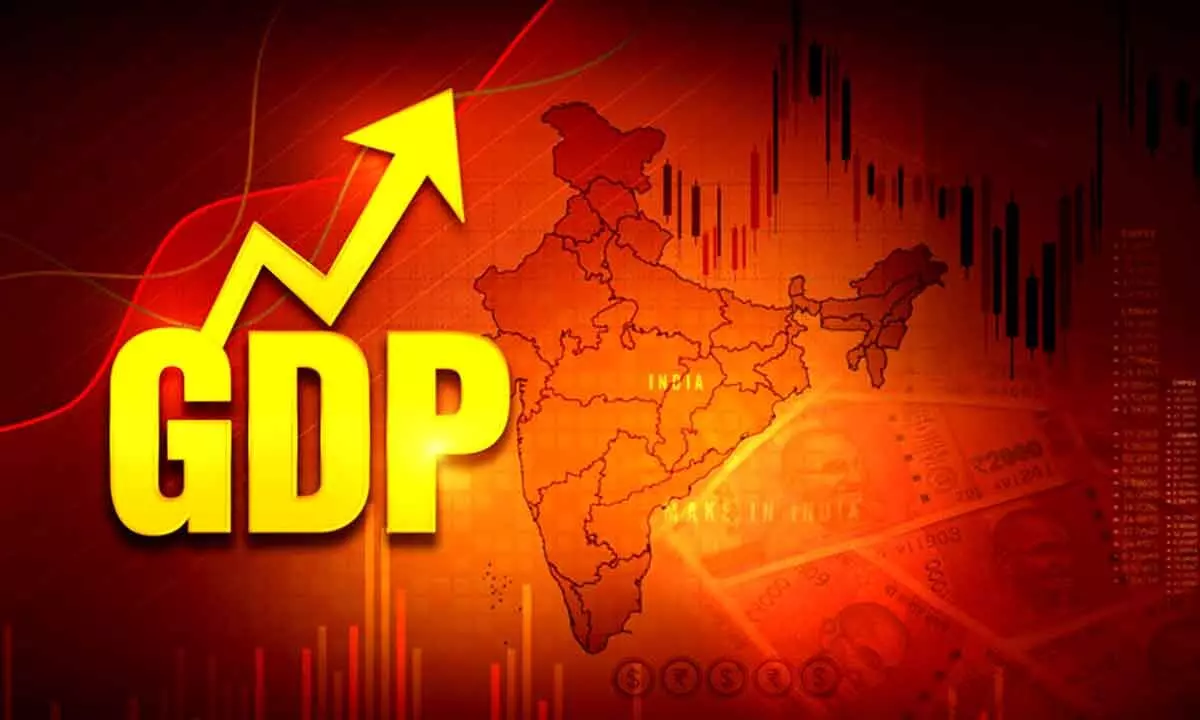Annual Economic Review a guide to 2024 growth prospects

The Annual Economic Review 2022-2023, released by Union Finance Ministry serves as a useful document as it gives a detailed analysis of the previous year’s performance besides the growth outlook for 2024.
India has performed substantially better than most nations and the GDP in 2022-23 reached 7.2 per cent beating the estimated level of seven per cent against the last quarter performance of 6.1 per cent growth. This growth should be looked in the background of last year’s GDP growth of 9.1 per cent and 2020-21’s negative growth of 5.8 per cent. If we go back to the pre-Covid days, the GDP growth of 6.5 per cent for 2018-19 fell to a too low level 3.9 per cent in 2019-20.
In this background, even if it looks a better growth for 2022-23, looking at the uncertainty in the global economy like the US 2.6 per cent, UK 4.1 per cent, France 2.6 per cent, Japan 1.1 per cent and China 3 per cent GDP growth.
It is also to be noted that most of the capex is being done by the government in recent years in order to give a multiplier impact. It its latest budget, the Centre has enhanced its allocation to fresh capex besides providing long-term funds to states to direct them to focus on long term capex projects.
According to the report, gross fixed capital formation (GFCF), at constant prices, recorded the highest proportion of GDP in 10 years. Gross Fixed capital formation has been a major growth driver in Q4 of FY 23, with its share in GDP at a 10-year high of 35.3 per cent. According to the report, this has been propelled by the crowding in private sector investment by a significant ramp up in public sector investment over the years.
Capacity utilisation is at 74.30 per cent as of December 2022.The private sector investment as a percentage of GDP had fallen to 19.6 per cent in 2020-21 from 21.3 per cent in 2015-16. The current momentum of growth has been sustained by consistent growth of the agricultural sector and services sector’s stupendous performance. The share of manufacturing sector to GDP, though, has remained constant at 15 to 16 levels. The government has provided tax concession to corporates at 22 per cent, which is much better than individual tax. According to the report, financial data for a consistent set of listed companies indicates broad-based private capex growth of 22 per cent in 2023.
India has performed well in terms of merchandise exports and service exports. Enhanced economic activities have led to higher import demand. There has been decline in global commodities price which helps in reducing prices in India’s import basket. The surge in service exports should help to cover the gap in net exports.
The CAD is sustainable if it is supported by remittances from NRI, and normal capital flows. The RBI has pegged remittances at $ 97.8 billion in CY 2022, YoY growth of 25.7 per cent. Recently foreign portfolio flows have invested Rs 76,407 crore in the current financial year. Net FDI flow was down to 16 percentage in FY 2023, the first decline in a decade as gross inward FDI flows stood at $ 71 bn in 2022-23 as against $ 84.8 billion in FY 2022 and accordingly net FDI too declined by nearly 27 per cent to $28 billion in 2022-23 as compared with $38.6 billion a year ago, mainly due to moderation in gross foreign direct investment and an increase in repatriation. However, this phenomenon is not unique to India.
Meanwhile, most high frequency indicators paint a healthy picture of the state of the economy. The GST revenue touched an all- time high of Rs 1.87 lakh crore this April. India’s gross GST revenue collection in May reached Rs .1.57 lakh crore and June Rs 1.61 lakh crore. The industrial production based on IIP registered a growth of 5.2 per cent in May from 4.5 per cent a month before. According to SBI report, the two-month run of IIP shows capital good sector has a healthy run while the consumer good is still lagging. The S&P Global India Manufacturing PMI dropped to 57.8 in June from May’s month peak of 58.7 and In April 2033 it stood at 57.2. Similarly the S& P Global India Serviced PMI declined to 58.5 in June 2023 from 61.2 in May and 62 in April 2023.
Expansion of National Logistics Policy, the Production Linked Incentive (PLI) scheme and PM GatiShakti among others, is likely to boost manufacturing output in the coming months.
This also should result in more employment opportunities. The report states that at a broader level of the manufacturing and services sector as well, rising job creation is evident. The report adds that manufacturing sub sectors of electronics, auto and auto ancillary and chemicals and services sector of insurance, hospitality and banking are leading to new job creation.
CPI Inflation has increased slightly from 4.31 per cent in May to 4.81 per cent in June. Globally it is projected that inflation outlook has been on the decline for 2023.
The dollar sank to a new two-month low at 101.94, the lowest in two months on July 12 as data showed the rise in the US consumer prices eased in June, suggesting that FED may have to raise interest rates just one more time, as the US is hoping to bring inflation back to two per cent. This has a positive impact on global markets. RBI has paused for two consecutive times. One should watch the scenario arising from recent excess rain, impact on agriculture, uneven distribution of rainfall and deficit rainfall, which will influence RBI’s further action on the inflation front. The central bank has reiterated its commitment to bring inflation to below four per cent and the current CPI inflation at 4.81 per cent, which is still higher than the targetted level but within he overall cap of six per cent.
According to the report, there are several positive factors like prudence fiscal management, good current account position, increasing foreign exchange reserves, inflation at manageable level, steady rupee and a positive prospective view on India’s service exports should help India to push forward the growth for the year FY 24 also.
In view of the global growth itself projected lower at 2.1 for 2023, India’s growth is projected at 6.5 per cent for 2023-24. With positive steps taken by all stakeholders, this growth projected can be exceeded as that of the last year. The financial sector is strong and credit growth is in the range of 15 to 16 per cent. The strong capital adequacy levels of the banks with lowest Net NPA should enable them to lend adequately to all productive needs of the economy. This favourable positive macro-economic and stable financial sector with better conditions in external conditions should help India in its journey towards the five trillion dollar economy, sooner than later.

















